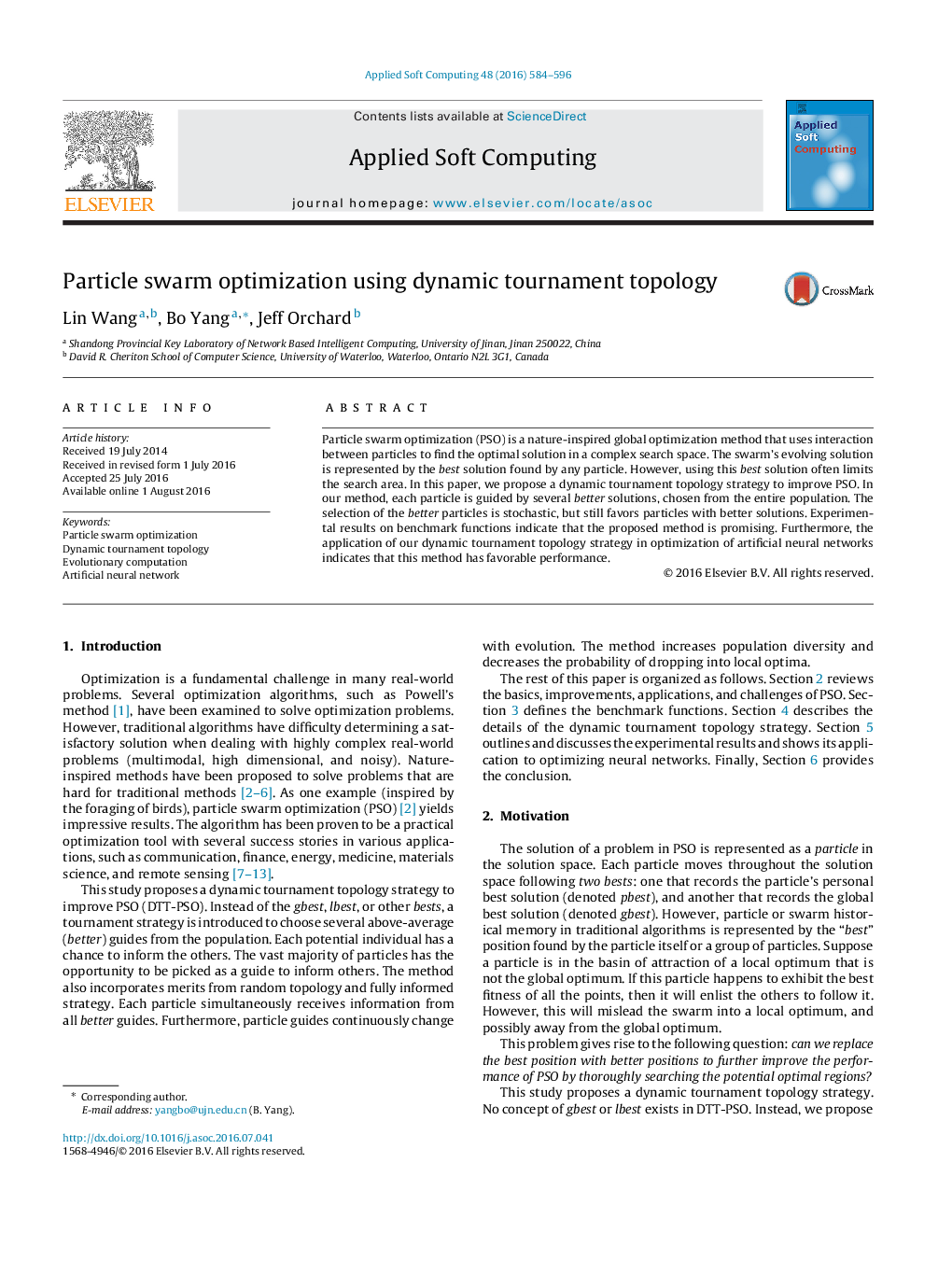| کد مقاله | کد نشریه | سال انتشار | مقاله انگلیسی | نسخه تمام متن |
|---|---|---|---|---|
| 494571 | 862799 | 2016 | 13 صفحه PDF | دانلود رایگان |
• This paper proposes a dynamic tournament topology strategy to improve PSO (DTT-PSO).
• Instead of the gbest, lbest, or other bests, the DTT-PSO chooses several relatively better guides from the entire population for each particle.
• The strategy ensures that the best particle informs the others with high probability only and not those with necessity.
• The method also incorporates merits from random topology and fully informed strategy.
• The particle simultaneously receives information from all better guides. Furthermore, particle guides frequently change with evolution.
• The method increases population diversity and decreases the probability of dropping into local optima. Furthermore, this paper shows the application of DTT-PSO in optimization of artificial neural networks.
Particle swarm optimization (PSO) is a nature-inspired global optimization method that uses interaction between particles to find the optimal solution in a complex search space. The swarm's evolving solution is represented by the best solution found by any particle. However, using this best solution often limits the search area. In this paper, we propose a dynamic tournament topology strategy to improve PSO. In our method, each particle is guided by several better solutions, chosen from the entire population. The selection of the better particles is stochastic, but still favors particles with better solutions. Experimental results on benchmark functions indicate that the proposed method is promising. Furthermore, the application of our dynamic tournament topology strategy in optimization of artificial neural networks indicates that this method has favorable performance.
Figure optionsDownload as PowerPoint slide
Journal: Applied Soft Computing - Volume 48, November 2016, Pages 584–596
